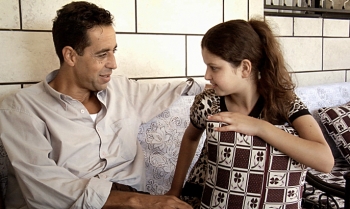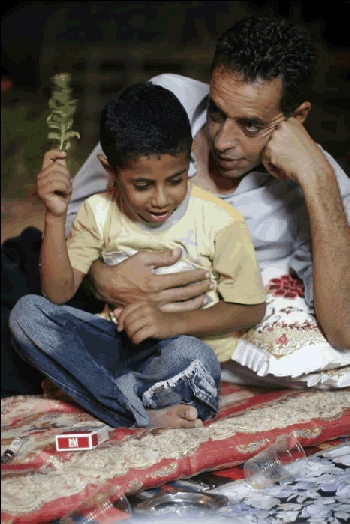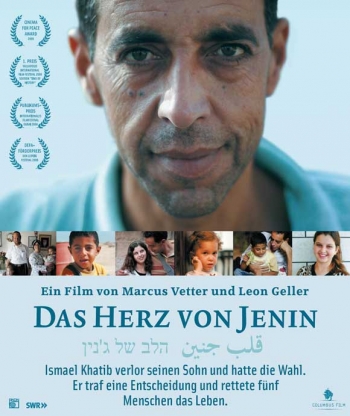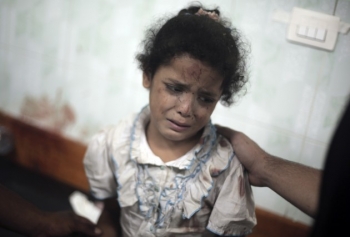The Polish historian Isaac Deutscher offered a famous analogy for the creation of the Israeli nation: a Jewish man leaps from a burning building and lands on a Palestinian, crippling him (Deutscher 1982, 136–7). Social critics like Gideon Levy point out that the analogy is incomplete: for him, the jumping man is, beyond 1948, still brawling with the crippled Palestinian and fighting the latter’s children and grandchildren too. There is so much—too much—that can be debated about the military and political ramifications of this decades-long conflict. What is certain is that the Israeli occupation, civilian and child fatalities, illegal settlers, rocket fire, and many other headlines are physical manifestations (and catalysts) of the profound hate between Palestinians and Israelis.
Hate is like a virus. It thrives in certain conditions, particularly when the pathogens of tribalism and racism are pervasive in childhood and throughout the education system. Hatred quickly multiplies and can infect entire societies and countries, often through carriers of a message calling for the dehumanization (not even destruction) of others. In other words, it is a social sickness. Like all the other vices about which the great religions warn us, it is a disease that cripples our capacity to see that the “other” is actually ourselves. Hate is a terrifying delusion that tricks us into thinking that a fellow sentient being is somehow fundamentally different or inferior.
Hate has festered with chronic intensity in Israel, Gaza, and the West Bank. The horrific prelude to Israeli-Palestinian hate was centuries of racism and violence against Jewish communities. The hellish climax of the Shoah (Holocaust) was supposed to have taught the entire world, “never again.” Yet to any compassionate person’s horror, the vile echoes of dehumanization have never been louder than in the current conflict, with both Israelis and Palestinians acting out the intolerance and violence of the past.
Heartbroken Palestinian children are brought up on stories of their siblings, cousins, or friends being blown apart by American-funded choppers or tanks. Often, they witness or experience it themselves. Radicalism—the sort Israelis and Palestinians advocating a two-state solution fear—finds a fecund breeding ground in the border checkpoints and Occupied Territories. Meanwhile, with the exception of Haaretz, the majority of Israeli media and educational channels equivocate Israel’s right to existence and self-defense with the government’s infallibility on any question of war. The fear of terrorism and regional neighbors trumps all other considerations. The Israeli oasis of prosperity and democracy is walled in by memories of a world that turned its back on the Jewish people. The roots of mutual hatred seem to have been nourished so fully by bloodshed, international passivity, and generational strife that the conflict has desensitized all but a minority struggling to be heard.
Hate is a devastating illusion, but it remains an illusion. Ismael and Abla’s heartrending story in The Heart of Jenin (2008) proved that the veil of hatred could be lifted. Their 13-year-old son Ahmed was shot dead by Israeli soldiers, but the couple decided to donate their child’s organs, including the religiously important heart, to several children in Israel. One of them was little Samah, a Druze girl, who received the heart transplant. A most touching moment in the film is the tearful meeting and embrace of Samah’s and Ahmed’s mothers, who recognized the tender reconciliation that could heal, if only partially, the pain of death. Ahmed’s parents could be at peace with their son’s legacy, which was literally beating in this Druze girl. A
Heartbroken Palestinian children are brought up on stories of their siblings, cousins, or friends being blown apart by American-funded choppers or tanks. Often, they witness or experience it themselves. Radicalism—the sort Israelis and Palestinians advocating a two-state solution fear—finds a fecund breeding ground in the border checkpoints and Occupied Territories. Meanwhile, with the exception of Haaretz, the majority of Israeli media and educational channels equivocate Israel’s right to existence and self-defense with the government’s infallibility on any question of war. The fear of terrorism and regional neighbors trumps all other considerations. The Israeli oasis of prosperity and democracy is walled in by memories of a world that turned its back on the Jewish people. The roots of mutual hatred seem to have been nourished so fully by bloodshed, international passivity, and generational strife that the conflict has desensitized all but a minority struggling to be heard.
Hate is a devastating illusion, but it remains an illusion. Ismael and Abla’s heartrending story in The Heart of Jenin (2008) proved that the veil of hatred could be lifted. Their 13-year-old son Ahmed was shot dead by Israeli soldiers, but the couple decided to donate their child’s organs, including the religiously important heart, to several children in Israel. One of them was little Samah, a Druze girl, who received the heart transplant. A most touching moment in the film is the tearful meeting and embrace of Samah’s and Ahmed’s mothers, who recognized the tender reconciliation that could heal, if only partially, the pain of death. Ahmed’s parents could be at peace with their son’s legacy, which was literally beating in this Druze girl. A


















